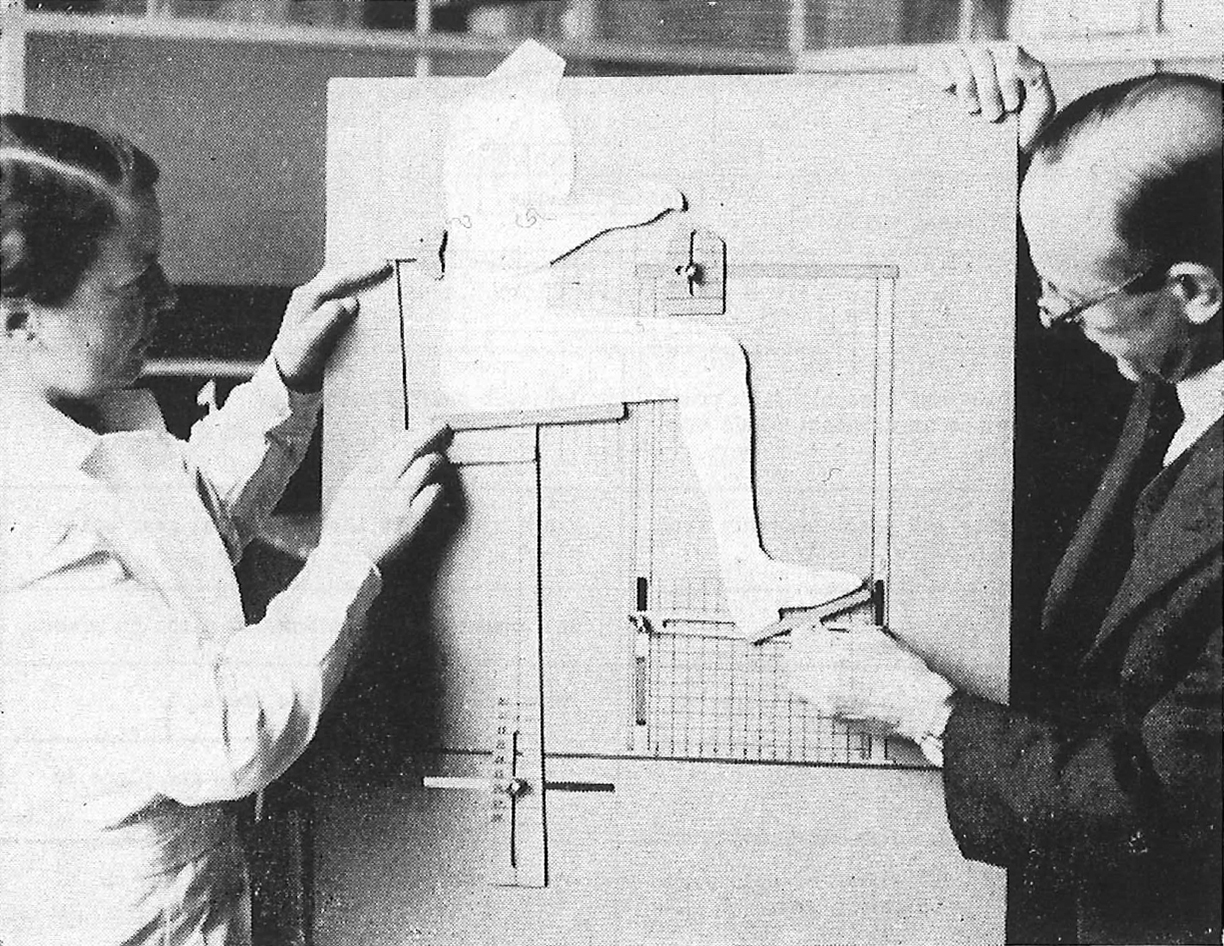Selected Topics in Architectural History and Theory: Work, Technology, Access: From Taylor to Twitch

Figure 1. “Planning a workplace with an adjustable model workplace and a scale model worker.” Marvin E. Mundel, Motion and Time Study: Principles and Practice, 3rd ed. (Englewood Cliffs, NJ: Prentice-Hall, 1960), 212.
ARC3313H S
Instructor: Elliott Sturtevant
Meeting Section: L0101
Friday, 9:00AM - 12:00PM
Online Synchronous
This seminar looks at the design of work and work of design, from the turn of the twentieth century to the present, from The Principles of Scientific Management (Taylor 1911) to the streaming platform Twitch. The course aims to consider how technology and design have historically shaped our perception of peoples’ ability, need, and desire to do work. To do so the course examines a series of attributes, and their opposites—non/human, un/productive, in/efficient, dis/able, non/white, non/standard, in/accessible, un/safe, in/attentive—that have been variously ascribed to peoples, objects, and spaces through weekly readings that combine recent scholarship from the fields of design history, labor history, disability studies, and the history of technology. The course begins with discussion of the European and US empires' so-called civilizing missions that used Machines as the Measure of Men (Adas 1989) and concludes with more speculative discussion of post-work and anti-work futures, including the question of How to Do Nothing (Odell 2019). In between, three case studies—the construction of the Panama Canal, the corporate office, and the twenty-first-century fulfillment center—will situate our study of the design of work and work of design, as it relates to questions of class, race, gender, and disability.
If you have questions or concerns related to the course or its content, please contact elliott.sturtevant@mail.utoronto.ca.

